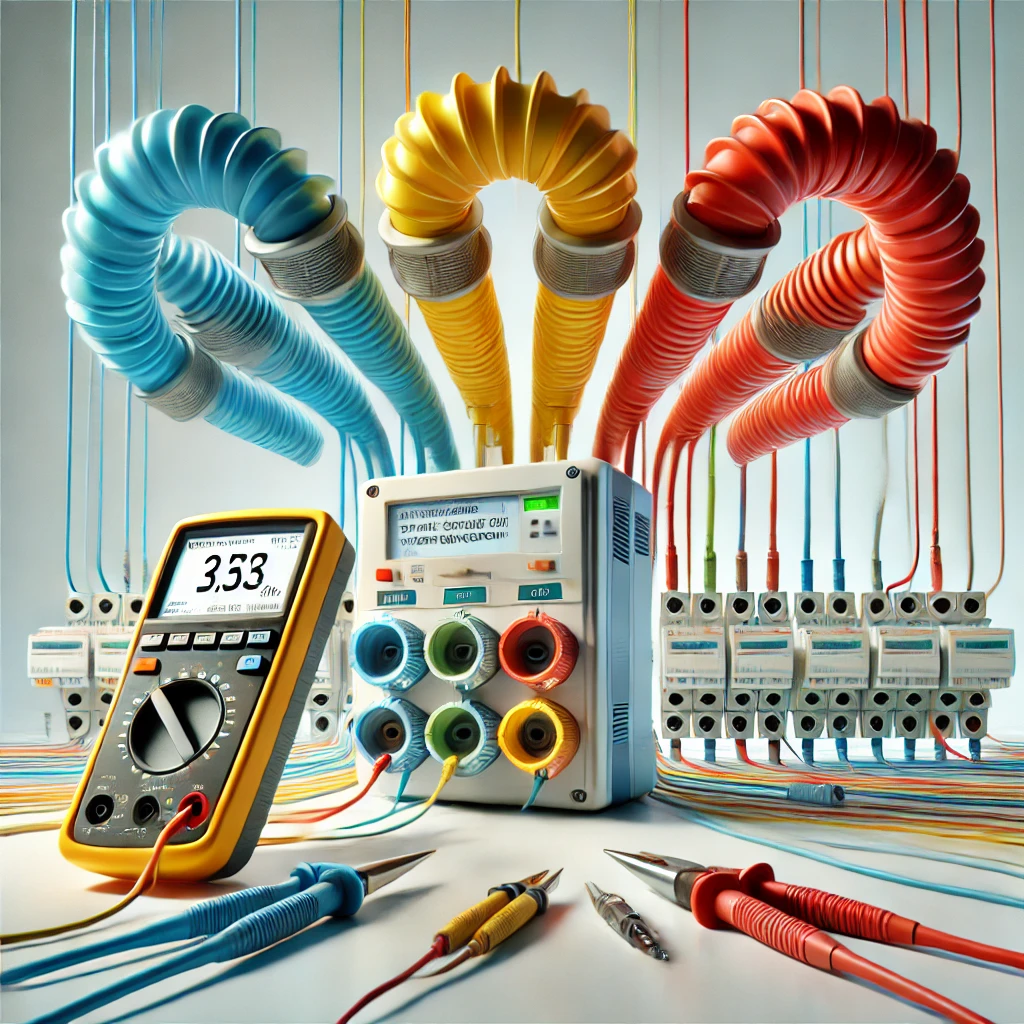How to Estimate and Measure Prospective Short-Circuit Fault Current in Three-Phase Systems
Regulation Guidance Note 3 provides methods for estimating and accurately measuring prospective short-circuit fault currents in three-phase systems, particularly when direct Line-to-Line measurements are not possible.

OW London Electrician and Home Automation Engineers Team
How to Estimate and Measure Prospective Short-Circuit Fault Current in Three-Phase Systems
When working on three-phase electrical installations, it is crucial to accurately calculate the prospective short-circuit (SC) fault current. However, there are cases where your measuring instrument might only allow Line-to-Neutral (L-N) measurements and not Line-to-Line (L-L) measurements.
Guidance Note 3 (Page 89) states:
"With some instruments, the voltage between line conductors cannot be measured directly. Where this is the case, it can be assumed that for three-phase supplies, the maximum balanced prospective short-circuit level will be, as a rule of thumb, approximately twice the single-phase value. This figure errs on the side of safety.
Where an instrument is rated for the higher voltage, a more accurate prospective fault current measurement, for a three-phase installation, can be obtained by measuring the line-to-line fault current and dividing the measured result by 0.87."
Simplified Explanation with Example
Scenario:
You are working on a three-phase electrical installation and need to calculate the prospective short-circuit (SC) fault current. However, your measuring instrument only allows a Line-to-Neutral (L-N) measurement, not a Line-to-Line (L-L) measurement.
Step 1: Estimating Using the Rule of Thumb (L-N Measurement)
First, measure the prospective fault current on a single-phase supply, which is a Line-to-Neutral (L-N) measurement.
- Example: Suppose the measured fault current between Line and Neutral (L-N) is 5 kA (kiloamps).
- According to the guidance note:
Estimated Three-Phase Fault Current: The rule of thumb suggests that for a three-phase system, the fault current will be approximately twice that of a single-phase (L-N) system.
So, the estimated three-phase fault current would be:
Estimated Three-Phase Fault Current = 2 × 5 kA = 10 kA
This estimation errs on the side of safety, ensuring that your design accommodates potential fault conditions.
Step 2: More Accurate Measurement (L-L Measurement)
If your instrument supports higher voltage, you can measure the fault current between Line-to-Line (L-L).
- Example: Suppose the measured fault current between Line-to-Line (L-L) is 8 kA.
- To get a more accurate three-phase fault current value:
Accurate Three-Phase Fault Current: Use the method provided in the guidance note by dividing the L-L measurement by 0.87.
Calculation:
Accurate Three-Phase Fault Current = 8 kA / 0.87 ≈ 9.2 kA
This approach gives you a more precise fault current value, improving the accuracy of your calculations.

Frequently Asked Questions
Q: How can you estimate the prospective fault current in a three-phase system if your instrument only allows Line-to-Neutral (L-N) measurements?
A: According to Guidance Note 3 (Page 89), if your instrument only allows L-N measurements, you can estimate the prospective fault current in a three-phase system by doubling the single-phase (L-N) measurement. This estimate errs on the side of safety.
Q: How can you obtain a more accurate prospective fault current measurement in a three-phase system?
A: To obtain a more accurate measurement, if your instrument supports higher voltage, you should measure the fault current between Line-to-Line (L-L) and then divide the result by 0.87, as stated in Guidance Note 3 (Page 89).
Q: What does the rule of thumb suggest about the relationship between single-phase and three-phase fault currents?
A: The rule of thumb mentioned in Guidance Note 3 (Page 89) suggests that the three-phase fault current is approximately twice the single-phase (L-N) fault current. This is an estimation that errs on the side of safety.
Q: What should you do if direct Line-to-Line measurement is not possible?
A: If direct L-L measurement is not possible, you can use the estimated value by applying the rule of thumb, which doubles the L-N measurement, as advised by Guidance Note 3 (Page 89).
Q: Why is dividing by 0.87 necessary when measuring L-L fault current?
A: Dividing by 0.87 when measuring L-L fault current provides a more accurate estimate of
What users Saying
Discover what our customers think about our services. Their feedback reflects our commitment to delivering exceptional service and expert solutions for all electrical and security needs.

